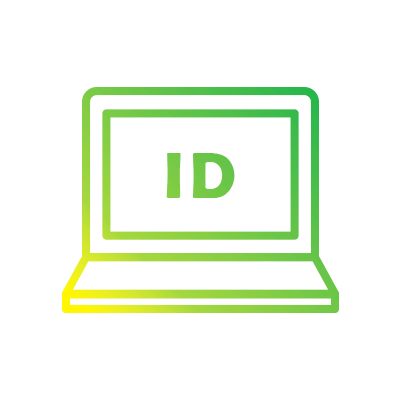What is the Japanese Language Proficiency Test (JLPT)?
It is the world's largest Japanese language test initiated by the Japan Foundation and the Japan Bond Cooperation Association (now the Japan Educational Exchanges and Services) to measure and certify the Japanese language proficiency of non-native speakers of Japanese. It is used for a variety of purposes, from measuring individual ability to certifying qualifications for higher education, employment, and salary increases. Some companies set the JLPT as a standard for foreign nationals to find employment in Japanese companies.
Quotes: JLPT Objectives and History
Examination Fee
7,500 yen (tax included)
Examination Schedule
The Japanese Language Proficiency Test (JLPT) is conducted twice a year, in July and December.
In some countries and regions outside Japan, the July test may not be held. Please check the Japan Foundation's website for more details.
Prior registration is required to apply for the test.
Register on the JLPT website , create a MyJLPT account, obtain an ID, and follow the instructions to apply for the test.
Application Procedure
For Cases Within Japan
- Step 1
Registration
-

- Register on MyJLPT
-
Create an account on "MyJLPT" to apply for the exam.
Registration is available anytime and anywhere as long as you have internet access.
- Step 2
ID Issuance
-

- Obtain a MyJLPT ID
-
Once registration is complete, a MyJLPT ID will be issued.
Please make sure to record this ID and the password you set to avoid forgetting them.
- Step 3
Login
-

- Log in to MyJLPT
- Use the issued MyJLPT ID and password to log in to MyJLPT.
- Step 4
Information Registration
-

- Register JLPT application information
-
After logging in, register your exam application information.
Once you have registered on MyJLPT, applying for exams in the future will be even smoother.
- Step 5
Payment
-

- Pay test fee
-
Pay the exam fee.
Payment methods include credit card, bank transfer (Pay-easy), or convenience store payment.
- Step 6
Application complete
-

- Completion of Exam Application
-
Once the exam application is completed, an "Application Receipt Number" will be issued.
Please make sure to keep this number as it will be required on the exam day.
For Countries or Regions Outside Japan
- Step 1
Confirmation
-

- Check Exam Information
- First, check the exam year and the administering organization in the country or region where you plan to take the test.
- Step 2
Obtain Information
-

- Obtain Exam Information
- Check the application method with the administering organization and obtain the exam guide (application form).
- Step 3
Application & Payment
-

- Application and Payment
-
Carefully read the exam guide and follow the instructions of the administering organization to apply.
Follow the instructions in the guide to complete the payment process.
- Step 4
Admission Ticket
-

- Receive the Admission Ticket
-
Once your application is complete, the administering organization will issue your admission ticket.
Please keep it safe until the day of the exam.
Evaluation Levels and Standards
The JLPT has five levels: N1, N2, N3, N4 and N5.
Please refer to the descriptions below for the guidelines of each level.
N5
The ability to understand some basic Japanese.
| Reading | One is able to read and understand typical expressions and sentences written in hiragana, katakana, and basic kanji. |
|---|---|
| Listening | One is able to listen and comprehend conversations about topics regularly encountered in daily life and classroom situations, and is able to pick up necessary information from short conversations spoken slowly. |
N4
The ability to understand basic Japanese.
| Reading | One is able to read and understand passages on familiar daily topics written in basic vocabulary and kanji. |
|---|---|
| Listening | One is able to listen and comprehend conversations encountered in daily life and generally follow their contents, provided that they are spoken slowly. |
N3
The ability to understand Japanese used in everyday situations to a certain degree.
| Reading | One is able to read and understand written materials with specific contents concerning everyday topics. One is also able to grasp summary information such as newspaper headlines. In addition, one is also able to read slightly difficult writings encountered in everyday situations and understand the main points of the content if some alternative phrases are available to aid one’s understanding. |
|---|---|
| Listening | One is able to listen and comprehend coherent conversations in everyday situations, spoken at near-natural speed, and is generally able to follow their contents as well as grasp the relationships among the people involved. |
N2
The ability to understand Japanese used in everyday situations, and in a variety of circumstances to a certain degree.
| Reading | One is able to read materials written clearly on a variety of topics, such as articles and commentaries in newspapers and magazines as well as simple critiques, and comprehend their contents. One is also able to read written materials on general topics and follow their narratives as well as understand the intent of the writers. |
|---|---|
| Listening | One is able to comprehend orally presented materials such as coherent conversations and news reports, spoken at nearly natural speed in everyday situations as well as in a variety of settings, and is able to follow their ideas and comprehend their contents. One is also able to understand the relationships among the people involved and the essential points of the presented materials. |
N1
The ability to understand Japanese used in a variety of circumstances.
| Reading | One is able to read writings with logical complexity and/or abstract writings on a variety of topics, such as newspaper editorials and critiques, and comprehend both their structures and contents. One is also able to read written materials with profound contents on various topics and follow their narratives as well as understand the intent of the writers comprehensively. |
|---|---|
| Listening | One is able to comprehend orally presented materials such as coherent conversations, news reports, and lectures, spoken at natural speed in a broad variety of settings, and is able to follow their ideas and comprehend their contents comprehensively. One is also able to understand the details of the presented materials such as the relationships among the people involved, the logical structures, and the essential points. |



